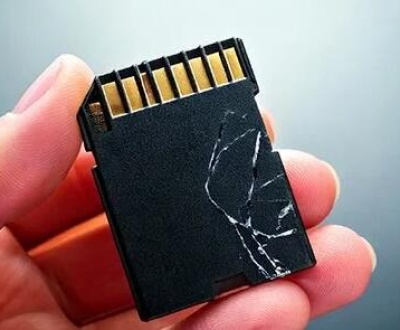Western Digital (WD) is one of the most trusted names in storage, offering a wide range of products that include hard drives (HDDs) and solid-state drives (SSDs). WD’s SSDs are popular due to their speed, reliability, and the added benefits of faster read/write speeds, which can significantly enhance the performance of both personal and business computers.
For users upgrading their storage or replacing a failing drive, WD Data Migration software is a powerful tool that simplifies the process of transferring data to a new WD SSD. With WD Data Migration, users can easily clone their entire system, including the operating system, applications, settings, and personal files, onto a new SSD without the need for a fresh installation of the OS.

What is WD Data Migration Software?
WD Data Migration Software is a free tool designed to help users migrate data from their old storage drive to a new WD SSD. It is compatible with both internal hard drives and external drives, enabling users to clone an entire disk or select specific files for migration. The tool is designed to work with WD’s solid-state drives, making it ideal for users upgrading to a new SSD.
The software supports a range of WD SSDs, including the WD Blue, WD Black, WD Green, and WD Red series, allowing users to move data from traditional spinning hard drives or older SSDs to faster and more efficient WD SSDs.
Some of the key features of WD Data Migration Software include:
One-click cloning: With a few clicks, users can easily migrate all their data from their old drive to a new WD SSD.
Cloning entire system: The software enables you to clone your operating system, applications, and all personal files, ensuring your new SSD works just like your old drive.
User-friendly interface: The simple and intuitive interface allows users of all technical levels to perform data migration quickly and efficiently.
Non-destructive cloning: WD Data Migration ensures that the existing data on the new SSD is not overwritten, preserving the integrity of the data being transferred.
Prerequisites for Using WD Data Migration Software
Before beginning the migration process, it’s important to ensure that your system meets the necessary prerequisites. These include both hardware and software requirements:
Hardware Requirements:
A compatible WD SSD: Make sure your new SSD is a compatible model from the WD product range.
An old hard drive or SSD: The source drive from which you will migrate data.
A computer with available SATA connections: If using a desktop, ensure there is an available SATA port to connect the new SSD, or you can use a USB-to-SATA adapter if using a laptop.
Software Requirements:
Windows Operating System: WD Data Migration is currently only compatible with Windows 7. 8. 8.1. 10. and 11.
Sufficient storage space on the target SSD: Ensure that the new WD SSD has enough space to accommodate the data from the old drive. The target drive should be at least as large as the source drive.
How to Install and Use WD Data Migration Software
Step 1: Download and Install WD Data Migration Software
Visit the official WD Support website to download the WD Data Migration Software.
Once downloaded, double-click the installer file and follow the on-screen prompts to install the software on your computer.
Step 2: Connect Your New WD SSD
Connect the new WD SSD to your computer. If you’re using a desktop, this can be done by connecting the SSD to a SATA port. For laptops, a USB-to-SATA cable or enclosure can be used.
Ensure that the SSD is detected by your system. You can check the “This PC” folder to verify that the new SSD is listed as an available drive.
Step 3: Launch WD Data Migration Software
Open the WD Data Migration Software after installation.
The main interface will display two main options: the source drive (your old drive) and the destination drive (your new WD SSD).
Select your old hard drive or SSD as the source drive and the new WD SSD as the destination drive.
Step 4: Start the Cloning Process
Once the drives are selected, click the Start Cloning button to begin the migration process.
The software will automatically clone the data, including the operating system, software applications, and personal files, from the source drive to the new SSD.
The time required for the cloning process depends on the amount of data being transferred. This process can take anywhere from 30 minutes to a few hours.
Step 5: Complete the Migration and Reboot
Once the cloning process is complete, the software will prompt you to shut down your computer.
Disconnect the old drive (if it’s an internal drive) or eject it (if it’s an external drive).
Boot your computer from the new WD SSD. Your computer should now be using the new SSD as the primary drive.
Step 6: Verify Data Migration
Once you boot into your operating system, verify that all your files, settings, and applications are intact.
Open a few files, check the performance, and make sure everything is working as expected.
Troubleshooting Common Issues During WD Data Migration
While WD Data Migration Software is designed to be user-friendly and reliable, there are a few common issues that users may encounter during the migration process. Here’s how to troubleshoot them:
1. Drive Not Detected
Ensure that the new SSD is properly connected to your computer, whether it’s via SATA or USB.
Check that the SSD appears in your computer’s disk management tool (on Windows, right-click “This PC” > “Manage” > “Disk Management”).
If using a USB-to-SATA adapter, try connecting the SSD directly to a SATA port to eliminate the adapter as the cause of the issue.
2. Insufficient Space on the New SSD
Make sure the new SSD has enough free space to accommodate all the data from the old drive.
If necessary, resize or remove files from the old drive before starting the migration.
WD Data Migration requires that the source drive data can fit on the destination drive, so this step is crucial.
3. Cloning Process Freezes or Takes Too Long
If the cloning process is taking longer than expected, ensure there are no background applications consuming too many system resources.
Restart your computer and try the process again to rule out temporary software glitches.
If using an external SSD, try connecting it to a different USB port or use a different cable.
4. The New SSD Does Not Boot
After migration, ensure that the new SSD is set as the primary boot device in your system’s BIOS or UEFI settings.
Check that the old drive is completely disconnected, or change the boot order to prioritize the new SSD.
Upgrading your computer’s storage to a faster, more reliable WD SSD has never been easier, thanks to the WD Data Migration Software. With this simple, free tool, you can transfer your entire operating system, programs, and files to a new SSD without any hassle. Whether you’re moving from an old HDD or upgrading to a higher-capacity SSD, WD’s migration tool offers a convenient, one-click solution that minimizes downtime and ensures a smooth transition to your new storage.
About us and this blog
Panda Assistant is built on the latest data recovery algorithms, ensuring that no file is too damaged, too lost, or too corrupted to be recovered.
Request a free quote
We believe that data recovery shouldn’t be a daunting task. That’s why we’ve designed Panda Assistant to be as easy to use as it is powerful. With a few clicks, you can initiate a scan, preview recoverable files, and restore your data all within a matter of minutes.
Subscribe to our newsletter!
More from our blog
See all postsRecent Posts
- How to search folder in file explorer 2025-05-09
- How to search for duplicates in file explorer 2025-05-09
- Finder search not finding files 2025-05-09

 Try lt Free
Try lt Free Recovery success rate of up to
Recovery success rate of up to









